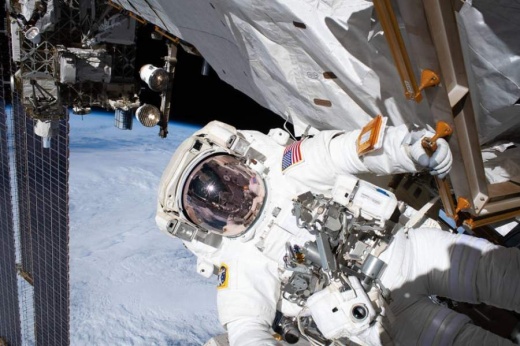In the fallout of the COVID-19 pandemic, the NASA facility in Clear Lake had to implement changes, much like any other business allowed to remain open. Those changes included closing certain facilities, suspending travel and requiring most employees to work remotely, Geyer said.
However, there is some work at the center that requires an on-site presence. For instance, employees have to be on-site to communicate with astronauts aboard the International Space Station, and others are testing hardware that will be used in upcoming launches, Geyer said.
As a result, about 10% of the center’s workforce is still on-site, he said.
“We are open because we have work that has to happen 24 hours a day,” Geyer said. “We are busy all the time.”
The center has come up with certain stages of operation that include certain rules about working at the center. In the strictest of stages, telework is mandatory, and travel is suspended. In the most lenient stage, staff can work on-site, travel and meet in person, all at a reduced capacity.
Geyer said it will take a long time for things to go back to normal, if they ever do, considering the pandemic has proven Johnson Space Center’s more than 10,000 workers can do a lot of tasks remotely, Geyer said.
“We have a lot of work to check our office buildings to make sure we can socially distance people,” Geyer said of returning to work. “Conference rooms are gonna be a challenge.”
Geyer, who has been director for about two years, said if someone had told him he would have to deal with a 35-day federal government shutdown and then a global pandemic, he would not have believed them.
“It’s been a real challenge these two years,” he said.
Future goals
While Geyer mentioned the coronavirus’s effects on the Johnson Space Center, he spoke more about what the center is working on.
On May 27, NASA will launch two astronauts to the ISS using a commercial rocket from SpaceX. This will be the first American launch of astronauts since the shuttle program ended in 2011; Geyer said he thinks NASA will hit the May 27 deadline.
“I have a sense that we’ll be there,” he said. “We are very close to actually launching our first mission.”
Additionally, the center is leading the mission to return to the moon through the Artemis program, a “sister” of sorts to the Apollo program that landed men on the moon in 1969. The goal is to land on the moon’s south pole, which has ice astronauts will be able to use for fuel and power, by 2024, Geyer said.
The moon mission, which will include the first female astronaut to walk on the moon, will include the Gateway, a habitable space station that will orbit the moon and allow astronauts to go to and leave the lunar surface—a key piece in making space travel sustainable. The Gateway will be instrumental in eventually getting astronauts to Mars, Geyer said.
“We know this is an exciting and important mission, but it has to fit tin the budget ... [that] continues to be tight,” he said.





